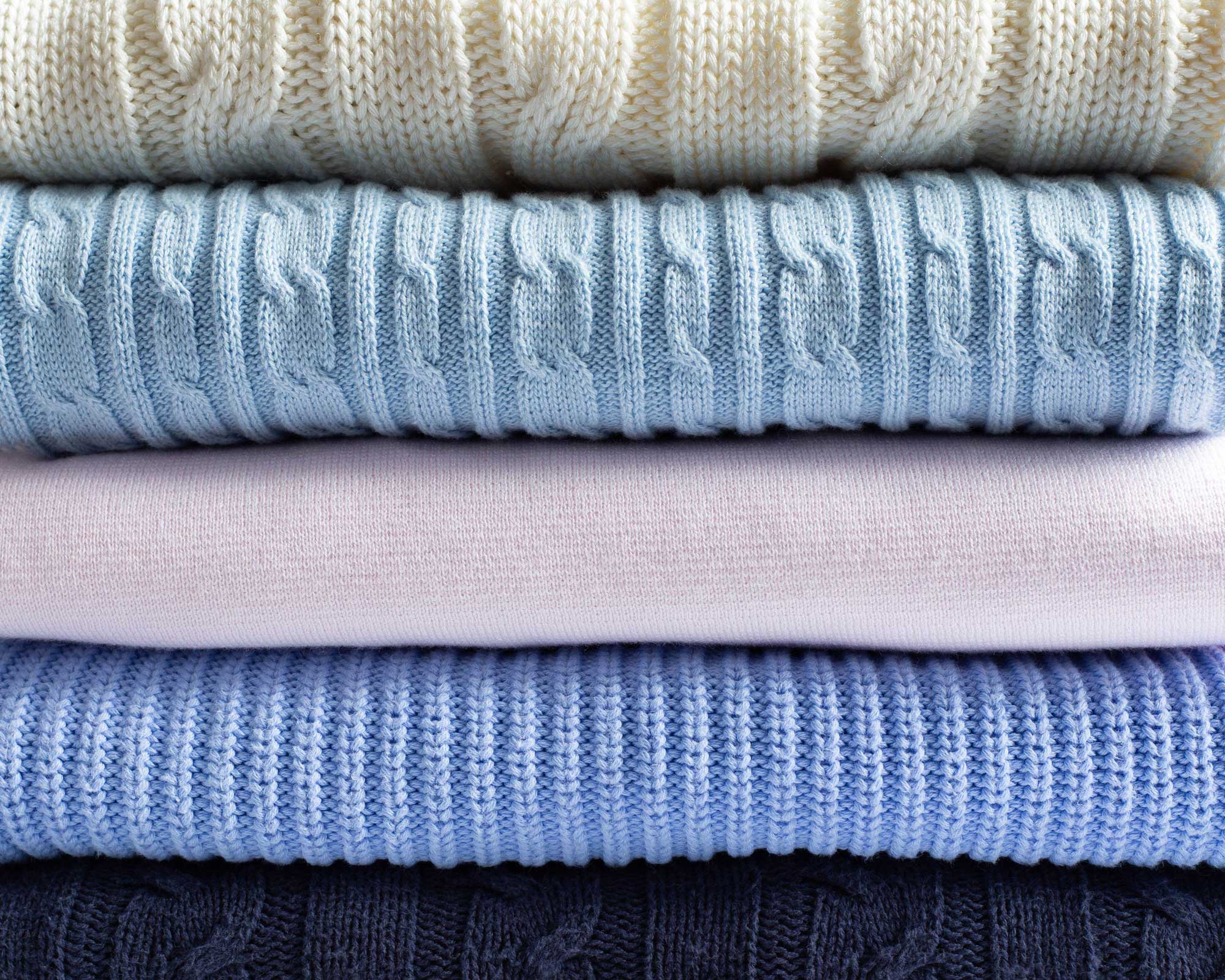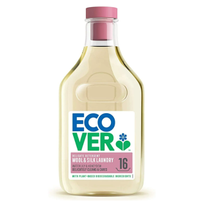How to prevent lint balls on clothing – precautionary measures laundry experts always take
Protect your clothing from pills and rough textures with these tips from professionals


There's nothing worse than putting on a sweater you've worn just a few times, only to see lint balls developing around the cuffs. This common problem makes our clothing look worse for wear, even when the item might be relatively new – and once pilling starts, it can be hard to stop .
Unfortunately, even high-quality garments and fabrics can be prone to lint balls if they are not washed carefully. As well as knowing the best ways to remove lint from clothes without damaging them in the process, laundry experts recommend these four precautionary measures to keep garments looking their best.
Note the advice below, so that next time you're doing laundry, you aren't accidentally causing unnecessary abrasion, creating rough patches of knotted fabric, and shortening the lifespan of your favorite cashmere sweater.
How to prevent lint balls on clothing
Lint formation happens when clothing fibers become loose due to everyday wear, and then these fibers tangle when washed, attaching themselves to tiny threads. It's particularly common with knitted fabrics, such as cotton, wool, acrylic and polyester. On the other hand, linen, silk and denim are much less prone to lint balls.

1. Look for detergents with cellulase
Laundry detergents contain enzymes that help to break down stains. Next time you are shopping for laundry detergent, check the ingredients for an enzyme called cellulase, which is known to loosen and remove lint balls in the washing machine.
2. Use dryer sheets
'Lint balls and other fuzz and fibers often get stuck to clothes, especially in the dryer,' says Sammy Wang, senior scientist at Bounce. 'That's because, in the dryer, heat and tumbling action creates static cling, which can make clothes stick to each other and other fibers.
'While static cling is especially prevalent during cold winter months when the air is dry, there are ways to help prevent lint and other fuzz from sticking to clothes,' Sammy says. Here are Sammy's top three suggestions:
- We recommend using a dryer sheet like Bounce Lasting Fresh Mega Sheets, at Amazon with each dryer load. Dryer sheets condition fibers and reduce static buildup on clothes, helping to prevent things like lint and fuzz from clinging to them as well as helping to prevent wrinkles.
- Always remember to clean your lint trap after each dryer load. This will help prevent excessive lint from building up in the lint trap and escaping into your dryer load.
- One tip is to get into the habit of using the used dryer sheet to grab lint and clean the lint trap screen after unloading dried clothes. This way, you always remember to clean the trap and you won't end up with a stray dryer sheet on clothes when you're getting dressed!

Sammy Wang is a consumer-focused engineer with experience commercializing disruptive products across multiple categories. Sammy has practical knowledge and in-depth product development skills in women's health, menopause, personal care, oral care, baby care, fabric care, home care, and devices.
3. Hand wash more often
Whether or not the label says they can be machine-washed, delicate items will be better off washed by hand and dried on flat surfaces than being repeatedly thrown into the washer and dryer.
Fluffy cardigans and cashmere socks will benefit from a gentle touch, so consider hand washing more frequently as part of your laundry routine. Sure, it takes longer, but will keep knitted items looking their best and save you money in the long run, as well as being kinder to the environment, using less power and creating less waste.
Ecover Wool & Silk Delicate Laundry Detergent | $15.88 at Walmart
We can personally recommend Ecover's delicate laundry detergent for hand washing. Mix a small amount with warm water in the bathtub or sink, massage into the fabric, and rinse after around 30 minutes. It has a gentle, pleasant scent.
4. Machine wash clothes with care
There are a few quick and easy things you can do to protect your clothes when washing to keep them in top condition for as long as possible, avoiding laundry mistakes you might regret later.
First, carefully sort your laundry so that you are washing similar materials and textures together (and avoid tights going in with towels, which will definitely lead to lint balls). Printing out a poster of laundry symbols to keep nearby or using an app will take the guesswork out of washing clothes.
It's always a good idea to fasten zippers on jeans and hoodies, and buttons on shirts to reduce friction. Similarly, you should wash items inside out, or place delicate items in mesh bags, at Amazon, to protect them from snags.
Finally, use a gentle cycle and a fabric softener, such as Downy Refresh, at Walmart.
FAQs
Does vinegar help to prevent lint balls?
'Vinegar works in much the same way as a conditioner, encouraging the fibres to detangle and lay flat, thereby reducing the appearance of pilling,' says Michelle Barrett from Capsule Closet Stylist.
Even if we take special care when washing out clothes, it's simply impossible to keep them looking like new forever. As well as taking steps to prevent lint balls, look after the things you wear all the time by investing in a lint remover, at Amazon, which works on clothes as well as couches, blankets, and curtains – so you and your home can stay lint-free.
Sign up to the Homes & Gardens newsletter
Design expertise in your inbox – from inspiring decorating ideas and beautiful celebrity homes to practical gardening advice and shopping round-ups.

Millie Hurst is a freelance lifestyle writer with over six years of experience in digital journalism. Having previously worked as Solved Section Editor at Homes & Gardens and Senior SEO Editor at News UK in London and New York, Millie has written for an array of homes brands including Livingetc and Real Homes and was formerly Senior Content Editor at Ideal Home. She has written and edited countless features on home organization, decluttering and interior design and always hopes to inspire readers with new ways to enjoy their homes. She loves to weave nature-inspired decor and nods to time spent in Italy into her own home.
-
 Midimalist kitchens are the trending way to create a characterful yet clutter-free space – and these 8 spaces prove how chic this best of both worlds style can be
Midimalist kitchens are the trending way to create a characterful yet clutter-free space – and these 8 spaces prove how chic this best of both worlds style can beIt's the go-to kitchen style for a balance of busy and simplistic design
By Molly Malsom
-
 I tried the baking soda trick to quickly and naturally clean my outdoor rug – it’s now set for Easter outdoor hosting
I tried the baking soda trick to quickly and naturally clean my outdoor rug – it’s now set for Easter outdoor hostingBaking soda is perfect for lifting dirt and debris
By Eve Smallman
